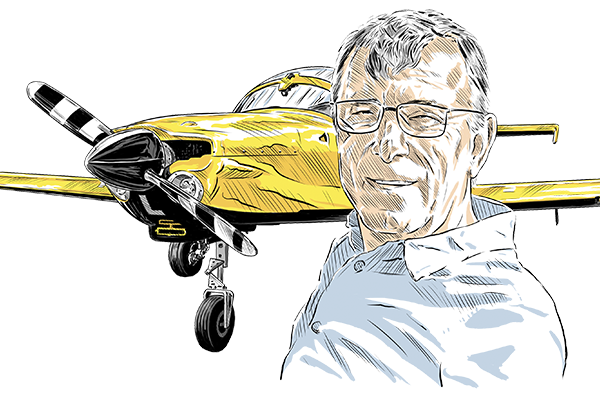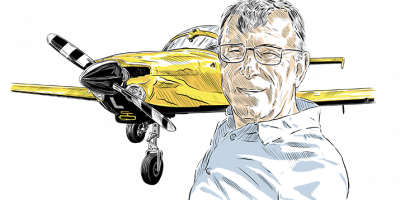Having enough power to get airborne safely should be a given. After all, we do everything possible to ensure the engine is in tip-top condition, ensuring that the fuel is not contaminated and is able to flow freely. We only load essential items onto the aircraft, noting their weights and we check the weather to make sure we are using a runway that’s long enough and pointing in the right direction for the wind. That should be enough shouldn’t it? A recent UK accident, and a look at what has been happening elsewhere, remind us that there is more to getting airborne safely than these factors alone, and as margins become eroded, a safe climb out may not be possible, even if you have full power available.
Accident 1
The pilot, a qualified flying instructor, left his home base at Sleap Airfield in Shropshire on the morning of the accident to pick up a passenger from Perranporth Airfield in Cornwall. He took a member of the flying club with him who was learning to fly, but who did not operate the aircraft. On arrival at Perranporth he landed on Runway 27 without incident. After a short time on the ground the pilot prepared for the return flight to Sleap Airfield. For the departure, the passenger boarded the flight at Perranporth and occupied the front right seat of the aircraft with the other passenger now sitting in the rear of the aircraft. Newquay Airport, 5nm to the north, was reporting a wind of 14kt from 300°, which the pilot considered favoured a take-off from Runway 27. After start, he taxied for Runway 27 and made a power check, which did not reveal any problems. He then entered Runway 27, carrying out a rolling take-off with 10° of flap set.
“The stall warner then ‘squeaked’ and the aircraft settled back onto the runway”
The pilot reported that the aircraft appeared to accelerate normally and became airborne at about 60kt, before it was halfway down the runway, but that it failed to climb. The stall warner then ‘squeaked’ and the aircraft settled back onto the runway briefly before becoming airborne again. He reported the aircraft then stalled, hitting the runway hard. There was then insufficient runway remaining in which to stop the aircraft, and it overran the end, causing extensive damage. Once the aircraft came to rest the three occupants, who were uninjured, were able to get out unaided using the cabin door.
Perranporth Airfield is an unlicensed aerodrome located on the north Cornish coast at an elevation of 330ft amsl. It has two operational asphalt runways: Runway 05/23 (799m) and Runway 09/27 (741m). At the time of the flight, both runways were available for use. Due to the proximity of sea cliffs at the end of Runway 27 two popular VFR flight guides carried a warning that ‘aircraft using this runway should expect windshear and severe turbulence in strong winds’.
Since the accident, one of these guides has been updated to advise that Runway 09/27 is not now generally available due to these wind effects. The guide also now provides more detailed information in the related warning advising of ‘rotor/curl-over’ affecting approximately the last quarter of Runway 27 during onshore winds over 10kt. It warns that this results in changes to head and tailwind components in excess of 10kt and more than 1,000 ft/min sink rates with severe turbulence, stall and loss of control.
Both the airfield and the flying club based there had their own websites, although neither of these provided information on the wind effects possible on Runway 27. The airfield website stated that Runway 27 was only available by approval, either over the radio or when booking prior to flight, but suggested that this was due to other users of the runway rather than because of the possible wind effects.
The flying club website provided users with links to two other published information providers: one included the warning about Runway 27, but the other provided only basic information, with no warnings included.
Pilots phoning to book into the airfield were asked to provide some basic information about the aircraft, departure point and any fuel required on landing. Operational info regarding the airfield, including the warnings associated with Runway 27 was not routinely passed on as it was considered the person normally taking the call was not suitably qualified to do so.
For the flight on the day of the accident the pilot used a flight planning app to carry out his pre-flight planning. The software provided basic aerodrome information but did not include any aerodrome warnings. The pilot reported he did not refer to a flight guide or other sources of information to get additional information prior to the flight. He was not aware of the warning related to Runway 27 and had not been advised of it when contacting the airfield to book his flight or when at the airfield itself.
The pilot had planned to take sufficient fuel for the return flight with an additional 45 minute reserve. He estimated each of the two flights would take 90 minutes and, as the aircraft used nine USG per hour, this gave a total fuel requirement of 33.75 USG. He stated he had refuelled the aircraft prior to departure from Sleap, dipping the tanks to check he had the correct quantity on board. He had then calculated his fuel onboard when at Perranporth for his departure as weighing 158lb, but had not re-dipped the tanks.
The pilot reported he had asked the passengers their weights, which he used to calculate a take-off weight of 2,635lb, 15lb under the maximum take-off weight of 2,650lb. Other evidence suggests some of these weights may’ve been underestimated.
The same weights were also used to calculate the aircraft’s Centre of Gravity (C of G), although the pilot used different lever arms to those quoted in the aircraft’s C of G schedule. Despite this the aircraft was, using the weights provided, within the permitted C of G range.
Accident 2
A Grumman AA-5A Cheetah aeroplane was substantially damaged during a forced landing after departing Cheyenne Regional Airport, Wyoming. The flight instructor stated that the take-off was normal. However, at the departure end of the runway, between 300-400ft above the ground, ‘the wind started blowing from all directions’, and he had difficulty maintaining control of the aircraft.
The flight instructor had difficulty keeping altitude and elected to land on the road next to a school. The right wing hit a construction sign and was substantially damaged.
A weather study was conducted by a meteorologist with the National Transportation Safety Board. The aerodrome forecast valid at the time of the accident forecast winds from 300° at 12kt gusting to 20kt. Cheyenne Regional Airport, two miles south south-east of the accident location reported wind 090° at nine knots, and clear skies. Weather service radar depicted a dry line boundary at the accident site, at the time of the accident. Wind speed and direction changed with altitude associated with this dry line boundary and would have had a corresponding increase in low-level turbulence and low-level wind shear.
Accident 3
A flight instructor and a private pilot receiving instruction on a Piper PA28R-200 were departing for an instructional flight from Runway 17L at Centennial Airport, Colorado. The pilot receiving instruction reported that after lift-off, the engine rpm was high but that the aeroplane was not gaining altitude.
“The pilot felt as if something was pushing the aeroplane downward”
The instructor reported that shortly after take-off, he felt as if something was pushing the aeroplane downward.
He stated that the engine had full rpm and that the throttle and mixture controls were full forward.
He recalled seeing that the airspeed was about 65kt and hearing the stall warning horn. The pilot receiving instruction reported that the airspeed was at 55kt before he braced for impact. The aeroplane contacted the ground about one mile from the end of the runway. About two minutes before the aeroplane departed, a small jet aircraft had taken off from the same runway. In addition, the winds at the time of the accident were from 170° at 15kt, gusting to 23kt.
After the accident, the private pilot reported that he was concerned about wake turbulence from the small jet, and the flight instructor reported that he thought that the aeroplane was affected by wind shear.





